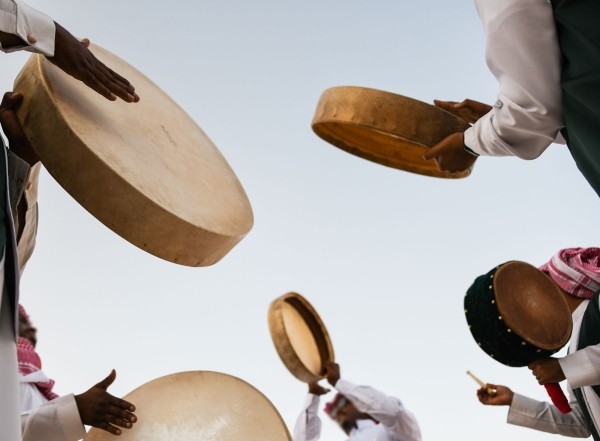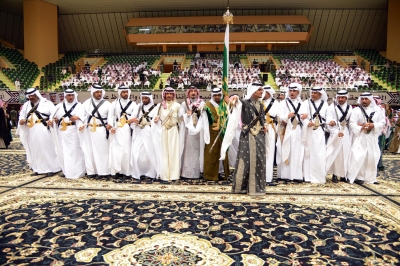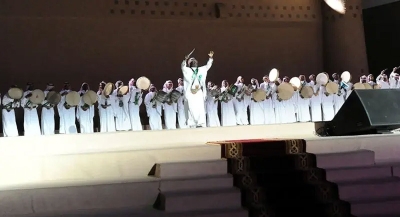

Al-Harabi Dance is one of the folk dances in the Kingdom of Saudi Arabia, known for its performance in al-Madinah al-Munawwarah and its surrounding areas. It is performed during celebrations and events, relying on the rhythms of the Zeer drum, accompanied by the singing of Kasrat.
The history of al-Harabi Dance
Al-Harabi Dance is one of the traditional arts for which al-Madinah al-Munawwarah is renowned. It is a tradition that its people have preserved and continue to perform during celebrations, weddings, and holidays to this day. Like other traditional dances and games, it is considered part of the heritage that reflects how ancestors interacted with their environment in past times.
Performing al-Harabi Dance
Al-Harabi Dance is performed in a circular formation created by the dancers, poets, supporters, and attendees. They are divided into two groups facing each other, each forming a semicircle, with a space in between for dancing and performing. Each group has a "leader" who raises his voice to sing the Zahim, Naqlah, or Sheilah, in what is called the Kasrah, a type of sung poetry. The opposing group echoes the chant while following the rhythms of the Zeer drum and tambourines. After a while, the leader of the other group sings a new Kasrah, which is then taken up by the first group and sung back. This exchange continues with dual performances accompanied by the Kasrah, as dancers step into the space to showcase their skills. The audience participates with chants and cheers until the rhythm of the Zeer drum ceases, marking the end of the dance.
Songs and rhythms accompanying al-Harabi Dance
Al-Harabi dancers perform to the rhythms of the Zeer drum and tambourines, synchronized with the Kasrah chants memorized and sung by the leader of the group, which are then echoed by the dancers. The Kasrah is a traditional poetic art performed in several cities in the western region of the Kingdom. It often consists of two poetic lines, though additional lines may be added. It resembles the Dubait style in its rhyme scheme, where the first verse (Sadr) follows one rhyme and the second verse ('Ajz) follows another. The Kasrah has only one rhythmic structure.
Related quizzes
Related articles

